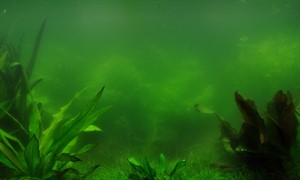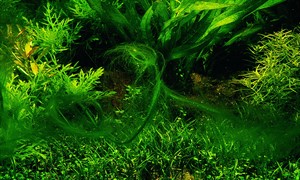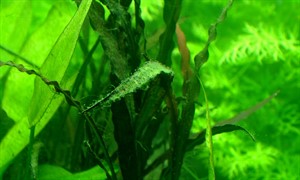
Plankton algae (green water, or phytoplankton) is a mass occurrence of small one-celled algae and is normally caused by too high nutrient concentrations in the water.
Treatment: Frequent change of water.
Plankton algae often appears in new aquariums or in aquariums in which a new layout has been made recently. It can be hard to get rid of, but a well-functioning filter with plenty of fine filter material can clear up the water again. Often a UV-treatment may be required, but Tropica does not recommend UV-treatment as a standard aid, as the UV-light also kills the useful bacteria. Biological control is difficult, as only a large population of filtering shells can remedy the problem. Often the plankton algae disappears of itself after repeated water changes.

Filamentous algae are colonies of one-celled algae, that stick together in long green threads.
Treatment: Frequent change of water and a large population of algae eaters, primarily Amano shrimps.
Filamentous algae can be very hard to get rid of, as there are types of it that neither shrimps nor algae-eating fish like to eat. In difficult incidents - and especially if it is a matter of the troublesome red algae/dulce - it may be necessary with a chemical treatment. BE CAREFUL, as some preparations are also harmful to your aquarium plants. Tropica generally recommends not to remove thread algae with chemical preparations. Try instead to change the water more often than usual and put in a large population of Amano shrimps; Up to 2 shrimps per 5 L water may be required for a transitional period.
 Algal layers are thin coatings of one-celled diatoms, red algae and green algae.
Algal layers are thin coatings of one-celled diatoms, red algae and green algae.
Treatment: A large and varied population of algae-eating fish and shrimps and cleaning the glass with a soft sponge.
Coating algae is rarely a big problem, if you have a good population of algae-eating shrimps and fish in your aquarium. There are however kinds, which may be troublesome, and these are the blue-black coatings that are formed by bluegreen algae, but they usually only appear by excessive feeding in fish aquariums. Less intense feeding usually makes the bluegreen algae disappear again.